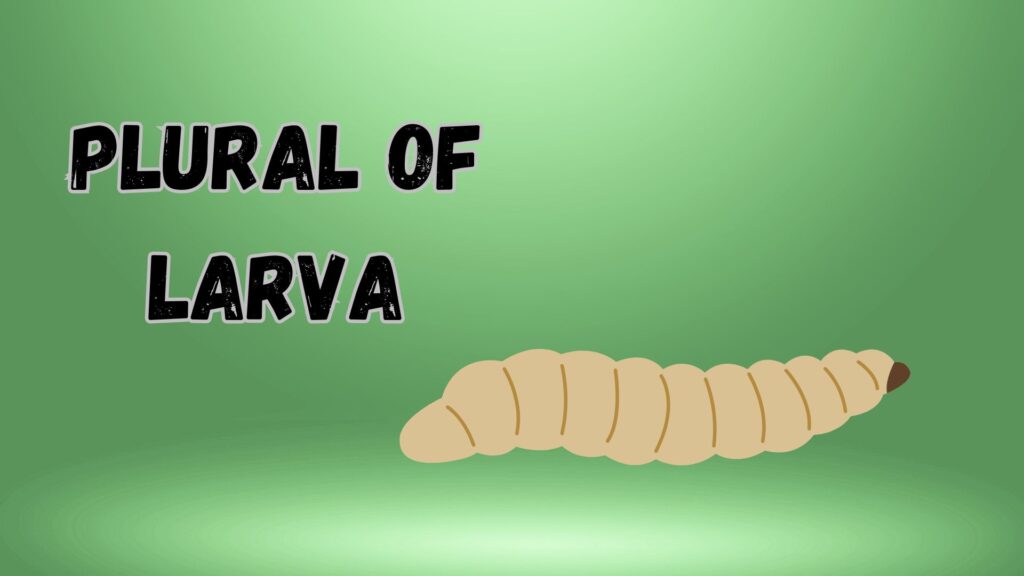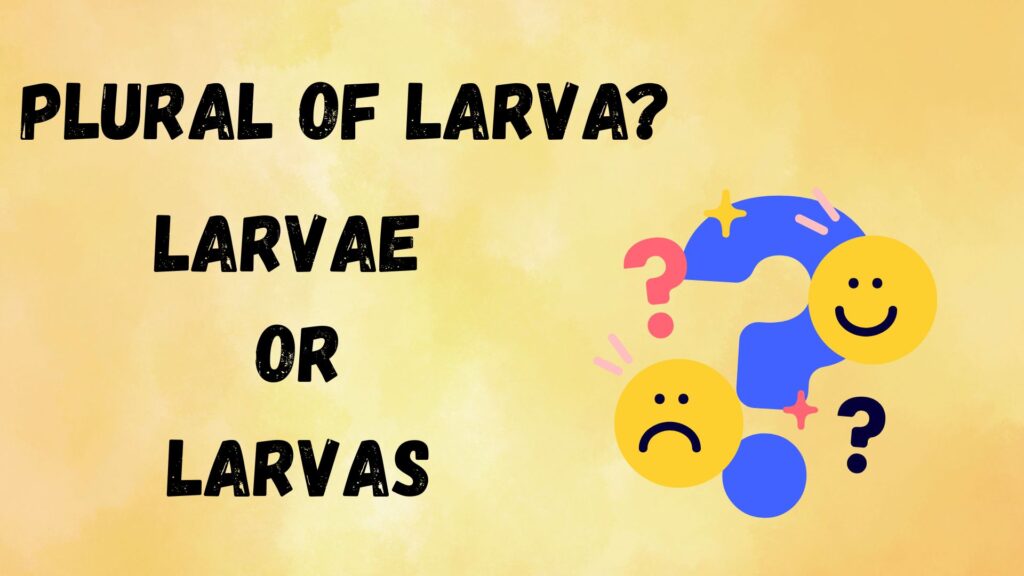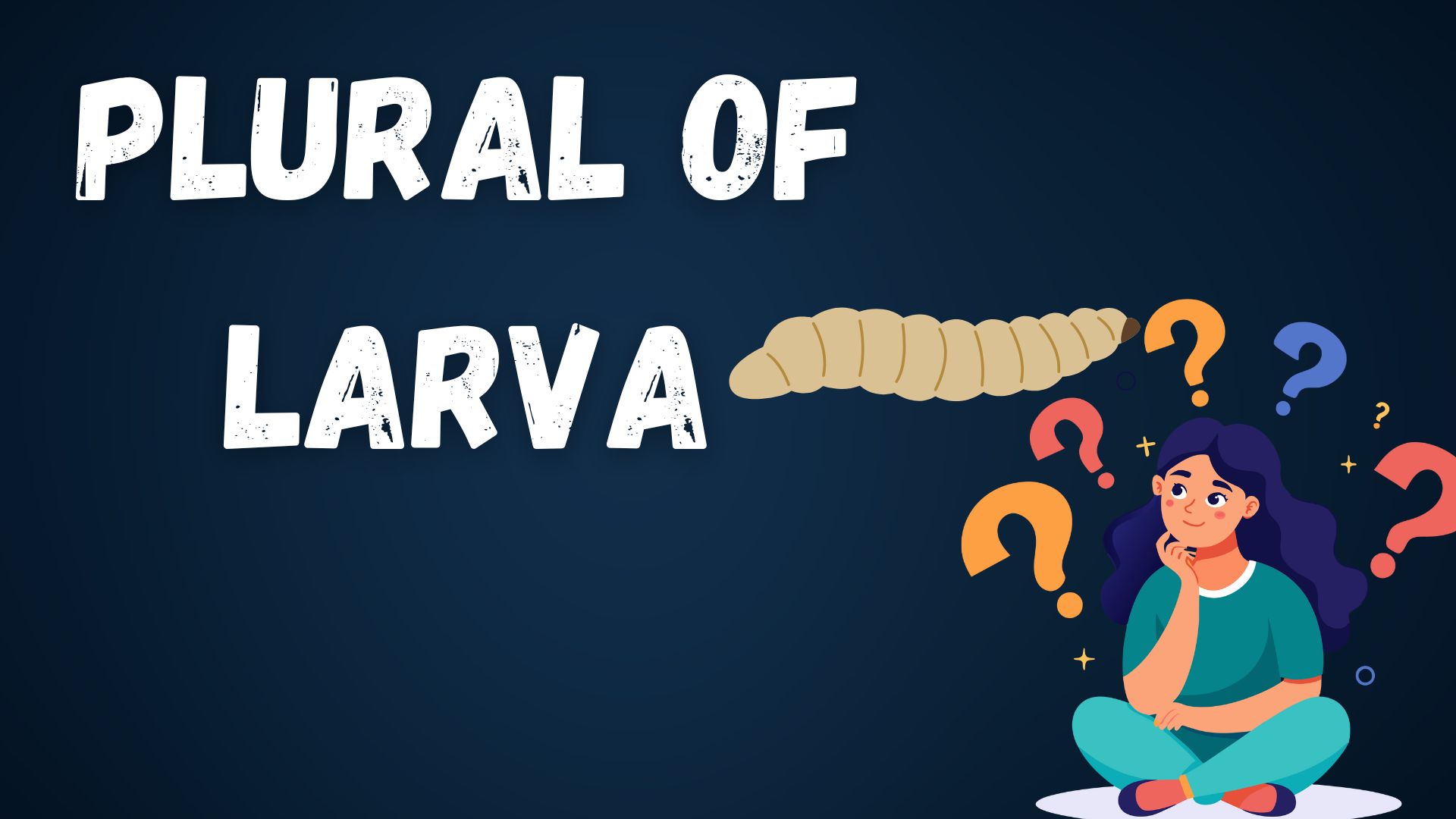If you’ve ever stared at a squirming little caterpillar and wondered, “Is it larva or larvae?” you’re not alone. This tiny word packs a punch, especially when it comes to scientific writing, grammar, and even Latin.
Let’s unravel this curious case and explain not just the plural of larva, but the history, the meaning, and the right way to use it in context.
Larva: Singular or Plural?

The word “larva” is a singular noun. It refers to the immature, often wormlike stage of an insect or other organism, before it undergoes metamorphosis into its adult form.
For example:
A larva of a butterfly is typically what we call a caterpillar.
Now, here’s where many people trip up.
What’s the Correct Plural of Larva? Larvae or Larvas?
Both larvae and larvas are technically plural forms but there’s a catch.
- ✅ Larvae is the standard plural form in scientific and academic contexts.
- ✅ Larvas is an accepted informal plural in non-scientific usage, especially in conversational English or casual writing.
Think of it this way:
- If you’re writing a paper on insect metamorphosis for your entomology class, use larvae.
- If you’re emailing your friend about some bugs in your garden, larvas won’t get you in trouble but it’s not the preferred form.
📧 Scenario Example: Formal Email (Correct Usage of “Larvae”)
Subject: Research Notes on Copepod Development
Hi Dr. Hargrove,
I’ve compiled all the microscopy data on the copepod larvae from our latest sample. The images clearly show the wormlike body and molting stages, which seem to follow the typical egg to larva to pupa to adult cycle.
Let me know if you’d like me to include predator-prey dynamics in the next batch of reports.
Best,
Mallory
See how “larvae” fits naturally in formal scientific writing? That’s the gold standard in academic tone.
Why Is the Plural “Larvae” and Not Just “Larvas”?

Great question. It goes back to the Latin origin of the word.
Larva in Latin means ghost, mask, or even demon how’s that for a plot twist? Roman mythology used the term to describe spirits or specters. Scientists borrowed the word in the 1600s to describe the mysterious, hidden form of an insect before it transforms.
Because “larva” is a first-declension Latin noun, its classical plural is larvae, pronounced /ˈlɑːr.vi/ or sometimes /ˈlɑːr.veɪ/ depending on dialect.
This is just like:
- Antenna → Antennae
- Alga → Algae
- Formula → Formulae (though formulas is more common in modern usage)
When Is “Larvas” Acceptable?
You’ll see “larvas” in non-scientific writing or casual settings. It’s especially common in US English where simpler pluralization patterns dominate.
For instance:
“I saw some weird-looking larvas under the log this morning.”
Is it correct grammar? Technically, yes in informal contexts but in educational, academic, or biological usage, always go with larvae to maintain subject-verb and noun agreement in number.
📧 Scenario Example: Informal Chat or Casual Email
Subject: Ew, Bugs in the Garden!
Hey Jake,
So, I dug around the compost pile today and found these gross little larvas. I think they’re baby beetles or something. Creepy, right?
Anyway, I tossed them into the woods. Hope they weren’t something endangered…
Catch you later,
Erica
While “larvas” is used here, it’s clearly a casual tone, and no one would raise an eyebrow in this context. But swap it into a classroom essay or lab report? That’d earn you a red mark.
Entomology, Morphology, and Molting: More Than Just a Grammar Lesson
This isn’t just about grammar usage. Understanding larvae means understanding how insects develop.
The life cycle of insects often follows this progression:
- Egg
- Larva (plural: larvae)
- Pupa (or chrysalis in butterflies)
- Adult
The larval stage is when the organism eats, grows, and undergoes molting shedding its skin multiple times.
This is especially true for:
- Caterpillars, which are the larvae of butterflies
- Grubs, the larvae of beetles
- Maggots, the larvae of flies
- Nauplii, the early copepod larvae
In each case, the larva looks nothing like the adult. It may be wingless, wormlike, or even microscopic, as seen in some aquatic invertebrates.
Common Grammar Mistakes with “Larva” and “Larvae“

Let’s clear up a few:
| ❌ Incorrect Sentence | ✅ Correct Version |
|---|---|
| The larvae is feeding on the leaf. | The larvae are feeding on the leaf. |
| This larvae will become a butterfly. | This larva will become a butterfly. |
| I found many larva in the soil. | I found many larvae in the soil. |
Why? Because subject-verb agreement matters. “Larva” is singular, so use singular verbs. “Larvae” is plural, so pair it with plural verbs.
Real-World Sources Use “Larvae” Too
Many respected publications and authors use larvae exclusively, including:
- Scientific American articles by Stephanie Pappas and Madhusree Mukerjee
- Ars Technica features by Jennifer Ouellette
- Reports in The Guardian
- Linguistic deep-dives from Grammarflex on Latin origin of words and noun agreement
These aren’t just scientific articles. They shape how everyday people encounter and learn terms like larva meaning and usage.
Final Takeaway: Which One Should You Use?
Use “larvae” when you want to sound accurate, professional, or correct in any scientific, academic, or formal setting.
Use “larvas” sparingly in informal speech or writing, where grammar rules loosen up.
In short:
- Talking to your professor? Use larvae.
- Texting your roommate about weird bugs? Larvas is okay.
✅ Quick Reference: Larva Grammar Cheat Sheet
| Term | Singular/Plural | When to Use |
|---|---|---|
| Larva | Singular | Always the singular form |
| Larvae | Plural | Standard plural in formal/academic writing |
| Larvas | Plural | Informal usage only |
So, next time you’re knee-deep in compost or reading about developmental biology, you’ll know exactly what to say and write.
From predatory larva to prey larvae, these words may be tiny, but they matter. And now, they’re crystal clear.

